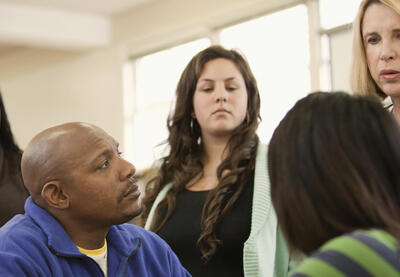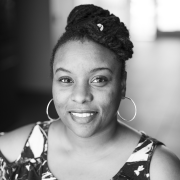It’s easy to recognize and then call out blatant anti-Black racism caught on video. We can observe for ourselves racial slurs, exaggerated fear and the privilege of whiteness forcefully taking up space. In recent weeks, there hasn’t been a shortage of these spectacles. We’ve seen white women and white men manufacture distress to justify calling the police on Black people doing benign things such as working out at a gym, sitting on a park bench or relaxing at a hotel pool.
Perhaps the most disturbing recent incident that led to a broader discussion online about racism happened in May. While the video lit the internet abuzz, the conversation halted the next day, when protests related to the killing of George Floyd by Minneapolis police grabbed the nation’s attention.
In the infamous video, a white New York City woman called 911 on a Black man in a secluded section of Central Park. The man had insisted that she put a leash on her dog.
Understanding how minor disputes have led to the death of Black people, the Black man began recording the interaction. In the video, the woman’s tone went from calm to frightened in a matter of seconds.
“I’m going to tell them there’s an African American man threatening my life,” she told him.
She then made sure to mention twice to the 911 dispatcher that an African American man threatened her and her dog before heightening to a more panicky tone.
“I’m being threatened by a man in the Ramble; please send the cops immediately!”
Many people who viewed the viral video were stunned by the woman’s overreaction and lobbied support for the Black man. Viewers quickly commented that this behavior is reminiscent of the Jim Crow-era rhetoric white women used when they made unsubstantiated accusations against Black men, often leading to lynchings. It is a clear example of the weaponization of whiteness.
But weaponizing whiteness happens in classrooms every day, and it’s not perpetrated only by educators who are openly racist or explicitly biased against students of color. As we’ve witnessed in viral videos, individuals who consider themselves progressive or non-racist also exhibit this behavior. White supremacist or anti-Black attitudes don’t belong to one ideology, one political party or a particular geographical location. Since both anti-Blackness and white supremacy are baked into America’s foundation, they often play out in our daily lives.
The weaponization of whiteness typically happens this way: There is a sense of entitlement, anger and need for retaliation, then feigned fear and, finally, white fragility.
Black students aren’t exempt from this experience. White educators must acknowledge this pattern of behaviors so that they won’t inflict harm on Black students.
Unpacking the Patterns
A notable observation we can make when a white person calls the police on a Black person is that they display a sense of entitlement. The caller feels they belong in that space—and the Black person does not—and believes they have the authority to police that person.
This behavior is replicated in classrooms when teachers or administrators refuse to allow the questioning of authority. Research has shown that teachers tend to police Black students’ responses to their authority more closely, perceiving Black students as exhibiting more “challenging behavior”—such as “willful defiance,” “insubordination” and “disrespect”—than others. Black boys in particular are seen as four and five years older than they are, according to an American Psychological Association study. This adultification allows police and even educators to justify dehumanizing them. Similarly, a Georgetown Law study confirmed that Black girls are less protected and punished more severely in school than white girls.
Outside of schools, if a Black person challenges white entitlement, that entitlement sometimes turns into anger and retaliation. Similar responses happen in schools. We’ve described numerous times in our Hate at School reports when teachers react violently against Black students who challenge their authority. Whether they pull their hair or call the police, it always leads to more harm for the student, including trauma.
When all else fails, an educator might feign fear. White educators understand how racial profiling and their perceived fear will get a quick response from law enforcement. Countless times, educators call school resource officers into a classroom to manage student behavior—knowing that there is a possibility the situation could escalate quickly.
A white female principal in Houston understood this very well when she told three staff members about a Black student with special needs who runs from class often. “We won’t chase him,” she reportedly said. “We will call the police and tell them he has a gun so they can come faster.”
She continues to work as a principal at that school. It’s unclear if she faced any disciplinary action or received training to address the implications of what she considered was a joke.
The most offensive incidents in school often make it to the news. That’s when gaslighting happens or white fragility shows up. Teachers will either assert they had a right to react the way they did or claim the child was acting violently. The teacher becomes the victim. Sometimes they cry.
In a Philadelphia education blog, some Black teachers recounted how white female teachers in particular use tears to gain sympathy or further assert their power.
One teacher explains: “When white women cry, there is a villain somewhere in the white imagination. History has viewed white women as prized possessions to be protected, so their tears have represented danger, terror, and death for Black people. Men going to war with armor is the same as white women waging war through tears.”
A Repeating History
Black people may not be surprised by the centuries-old tactic of weaponizing whiteness, but that doesn’t make it less traumatizing. White people may assume that someone who hasn’t committed a crime shouldn’t worry when the police are called on them, but that assumption ignores history and an insidious system that hands out justice disproportionately.
Police interactions that lead to loss of life for Black people—regardless of whether a crime happened—are well documented. We know that the weaponization of whiteness has historically led to the deaths of people like Emmett Till and residents of Rosewood, Florida.
And during a pandemic, shuffling Black people into police custody—when Black people are disproportionately dying from COVID-19—is a sure way to inflict harm.
Black Lives in School Haven’t Mattered
When white educators weaponize their whiteness to affirm their authority, they could change the trajectory of a Black child’s life. Data shows that Black students are disproportionately disciplined and pushed into the school-to-prison pipeline. An Education Week analysis found that Black students in 43 states and the District of Columbia were more likely than other students to be arrested while at school.
Black students are heavily policed in schools, from their hair and dress to their language and behavior. Early in life, they experience surveillance in the same way adult Black people do: They are followed, profiled, searched and assumed to be menaces. There are metal detectors and sometimes excessive force when police do get involved.
These scenarios are obvious instances of the criminalization of young Black students. It should go without saying that teachers and other school personnel should not call the police on students for minor issues. As we’ve said here before, the presence of police on school campuses often creates more conflict. Police should never take the lead in a situation that doesn’t pose a physical threat to people’s well-being.
As we witness an uprising against abuse of power, it’s not acceptable to claim that educators, when calling the police on students, don’t mean to cause harm. The intent doesn’t matter. Educators are knowingly ignoring students’ well-being, especially Black students’, when they call the police on them or when they counter any and every challenge to their authority.
This constant barrage of harm creates both physical and mental health issues for Black students. They’re trying to survive in systems that weren’t designed for them to succeed. But educators must pledge to first do no harm. Black minds do matter.
Educators must recognize and stop these patterns. Dismantling a culture of punitive justice and over-policing at schools requires an all-hands-on-deck approach. It means doing some internal work first—confronting biases and actively working against them. And this work shouldn’t end there. It’s critical that educators reach out to other educators in a school community to urge them to do the same. As a collective, educators can realize their power to challenge the status quo. They can push school board members, superintendents and other school leaders to help shift school culture to an environment free from weaponized whiteness, police intimidation and trauma.

